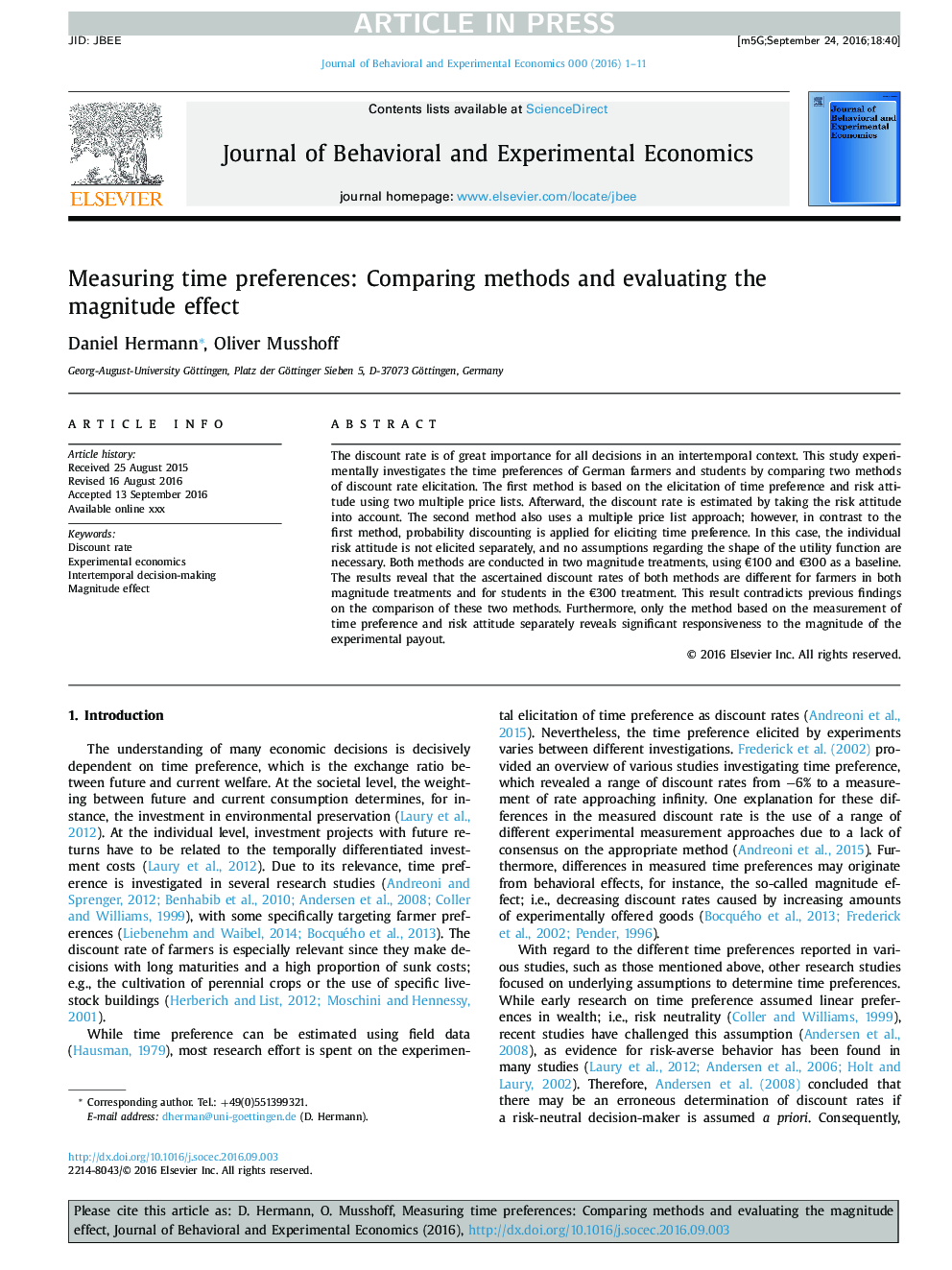| Article ID | Journal | Published Year | Pages | File Type |
|---|---|---|---|---|
| 5034158 | Journal of Behavioral and Experimental Economics | 2016 | 11 Pages |
Abstract
The discount rate is of great importance for all decisions in an intertemporal context. This study experimentally investigates the time preferences of German farmers and students by comparing two methods of discount rate elicitation. The first method is based on the elicitation of time preference and risk attitude using two multiple price lists. Afterward, the discount rate is estimated by taking the risk attitude into account. The second method also uses a multiple price list approach; however, in contrast to the first method, probability discounting is applied for eliciting time preference. In this case, the individual risk attitude is not elicited separately, and no assumptions regarding the shape of the utility function are necessary. Both methods are conducted in two magnitude treatments, using â¬100 and â¬300 as a baseline. The results reveal that the ascertained discount rates of both methods are different for farmers in both magnitude treatments and for students in the â¬300 treatment. This result contradicts previous findings on the comparison of these two methods. Furthermore, only the method based on the measurement of time preference and risk attitude separately reveals significant responsiveness to the magnitude of the experimental payout.
Related Topics
Social Sciences and Humanities
Economics, Econometrics and Finance
Economics and Econometrics
Authors
Daniel Hermann, Oliver Musshoff,
